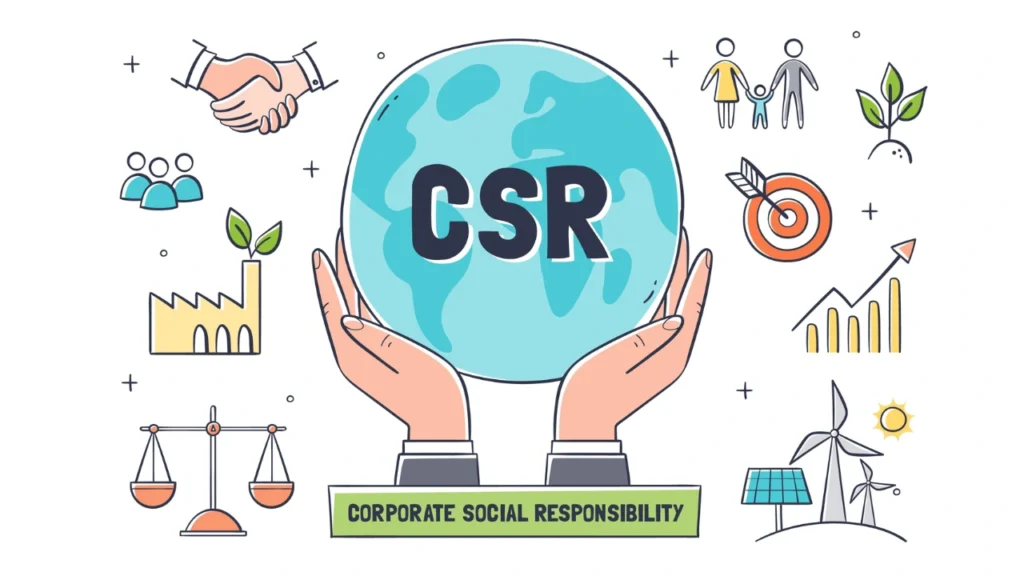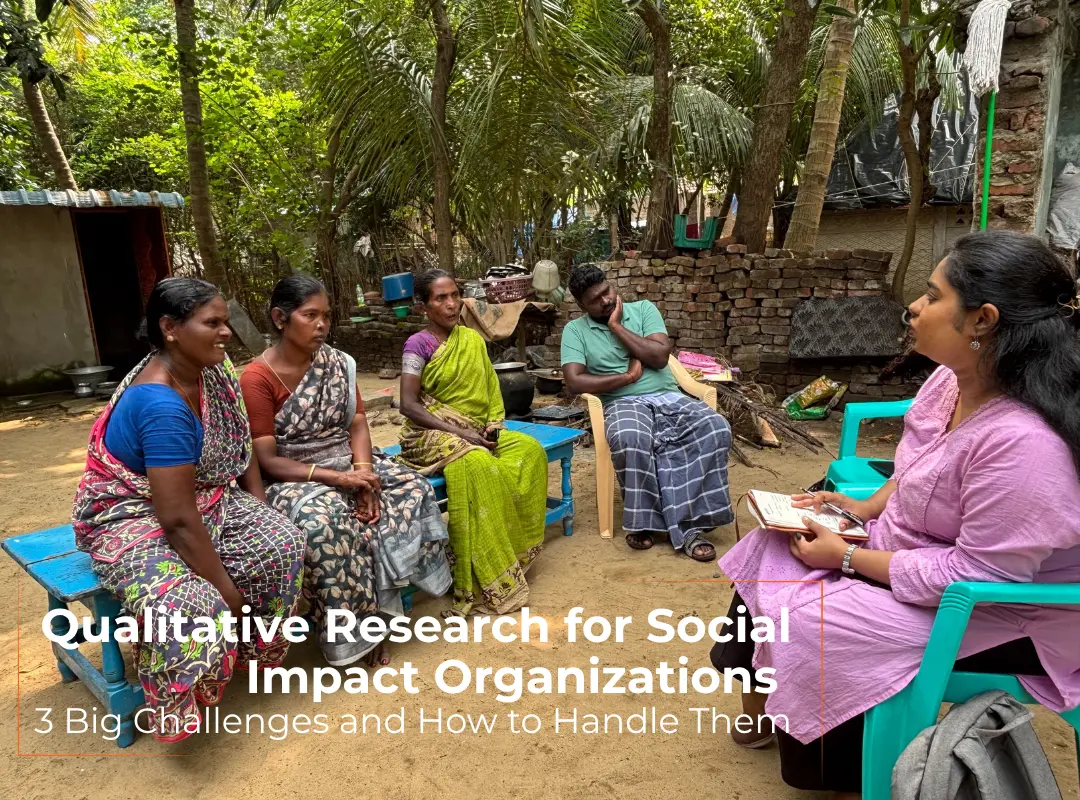In 2025, companies are expected to do more than donate, they are expected to show what changed, for whom, and how. This is where CSR reports matter. A clear, well-structured report helps businesses stay accountable, meet legal requirements, and communicate their impact with honesty.
At 4th Wheel, we are a CSR consulting firm that helps companies go beyond basic compliance. We build evidence-led strategies and support end-to-end CSR reporting, from data collection to final publication. This guide breaks down what a CSR report is, why it matters, and how to do it well.
Table of Contents
What Is a CSR Report?
A CSR report is a document that details a company’s corporate social responsibility initiatives, the communities they serve, the resources invested, and the outcomes achieved through these efforts. These reports cover how companies use resources, support communities, reduce emissions, and follow ethical practices.
In India, CSR reports are often part of a company’s legal and strategic responsibilities. They help show transparency and build trust with stakeholders—employees, investors, partners, and the public.
A good corporate social responsibility report example includes both data and real stories from the ground. It reflects the company’s purpose and commitment to social good.

Types of CSR Reports
Companies create different kinds of CSR reports depending on their purpose and audience. Some are broad, others are focused. Here’s a breakdown:
1. Annual CSR Report
An annual CSR report covers the company’s social, environmental, and community efforts over a financial year. It includes program summaries, numbers, budgets, and field stories. This type is usually shared with regulators, investors, and the public. It helps companies stay compliant with laws while showing what they’ve achieved on the ground. Many firms also use it to reflect on what they’ll do differently next year.
2. Thematic CSR Report
A thematic CSR report focuses on one area, such as education, climate, or healthcare. It dives deeper into goals, partnerships, and long-term changes. These reports are useful when a company wants to highlight expertise or share results from a flagship program. Donors and partners often look at these to assess credibility in a specific domain.
3. Internal CSR Report
Internal CSR reports are meant for internal tracking. They focus on operations, fund flow, and program performance. These are short, data-rich documents used by CSR teams and leadership to make timely decisions. While they are not usually published, they support ongoing CSR reporting and help teams prepare for external reviews or audits.
4. Impact-Focused Report
An impact-focused report presents the actual change a program created, not just the number of activities. These reports often include outcome data, stories from the field, and insights from third-party evaluations. Many companies work with a CSR consulting firm like 4th Wheel to bring in external validation. These reports are valued by funders, boards, and audit teams because they show depth and accountability.
5. Integrated CSR Report
An integrated report combines financial reporting with social and environmental performance. It shows how a company’s CSR reporting aligns with its business outcomes. These reports are commonly used by listed companies and those looking to present a full picture of the business and social impact together.
Why Is a CSR Report Important?
The importance of CSR report writing has grown sharply in recent years. Regulations have tightened. Investors now care about social impact management. Customers expect more from brands. A clear, well-written annual CSR report helps businesses show that they are serious about long-term value, not just short-term gain.
CSR reports also help teams reflect on what worked and what didn’t. This improves program design and accountability. For leadership, they’re a tool to plan better and stay aligned with broader social goals.
Publishing CSR reports of companies also supports sector-wide learning. Others in the field can study results, improve their own practices, and work toward similar outcomes.

Key Elements of a CSR Report
A strong CSR report is more than a summary of activities. It should tell a clear story of purpose, results, and learning. Below are the core elements that every effective report should include.
1. Goals and Focus Areas
This section explains what the company set out to achieve through its CSR initiatives. It should clearly define priority areas such as education, healthcare, or climate action. Goals must be specific and time-bound, not broad statements. A strong CSR report links each goal to a larger purpose—community needs, business strategy, or global development goals—so readers understand why the work matters and what success looks like.
2. Program Highlights
This section gives short but structured summaries of major programs. Each summary should include the location, duration, partners involved, and a brief description of activities. For example, if a company supported digital literacy, the report should mention the number of training sessions, locations, and types of learners. A good corporate social responsibility report example shows how different efforts are connected and aligned with the overall goals.
3. Outcomes and Data
This is the most critical part of any CSR report. Such an evaluation should show what actually changed, not just what was done. Numbers should include people reached, resources used, and tangible shifts, such as increased income, improved attendance, or cleaner water. Data must be reliable and, when possible, externally validated. This section often forms the core of corporate CSR reports because it helps readers assess the real impact of the company’s efforts.
4. Voices from the Field
Including community voices makes the report human and real. These may be quotes, short testimonials, or mini-case studies. They help put a face to the numbers. For example, a quote from a student or health worker shows the reader how the program felt on the ground. These stories support the data and make the report more relatable. A balanced CSR report example uses these voices without exaggeration or tokenism.
Also Read: 10 Powerful Examples of Corporate Social Responsibility in Practice

5. Challenges and Learnings
No program runs without issues. This section should speak openly about what didn’t go as planned. Delays, budget limits, or low engagement, whatever the issue, sharing it builds trust. More importantly, this part should show how the company responded and what it learned. A credible CSR reporting process includes space for reflection. This is where long-term credibility starts to build.
6. Future Plans
This part outlines what the company plans to do next. It may include scaling up, shifting focus, or addressing earlier gaps. Future plans should align with learning from past work. A good report doesn’t just look back, it prepares the reader for what’s coming. This also helps align internal teams and shows funders or regulators that CSR work is evolving with purpose.
7. Design and Accessibility
How the report looks also matters. Complex data must be presented in a clean, readable format. Charts, maps, and visuals can help, but only if they serve the message. Many companies now work with a professional CSR report design firm to ensure accessibility, especially for diverse stakeholders. Reports that are easy to read and navigate are more likely to be used, not just downloaded and ignored.
Principles of Good CSR Reporting
A strong CSR report is built on a few core principles that guide its structure and content:
- Clarity: Use simple, direct language. Avoid jargon or heavy phrasing. The report should be clear and comprehensible, even for those without specialized knowledge.
- Honesty: Share both achievements and gaps. Reports that show only success may seem unreliable.
- Data with Meaning: Share outcomes, not just outputs. For example, instead of “5,000 saplings planted,” show how many survived and where.
- Relevance: Align content with the company’s business goals and community priorities. This gives each initiative a clear purpose.
- Consistency: Use the same format and indicators each year. This makes progress easy to track.
- Monitoring and Feedback: Include insights from your M&E systems. Regular feedback from partners and communities adds depth to the numbers and helps improve future CSR reporting.

CSR Reporting Guidelines & Compliance in India (2025)
In 2025, CSR reporting requirements in India are shaped by both the Companies Act and evolving expectations from stakeholders.
- Legal Mandate: Companies that meet CSR thresholds under Section 135 of the Companies Act must publish an annual CSR report. This must include project details, fund allocation, outcomes, and monitoring systems.
- Board Oversight: CSR committees must review and approve the report. The Board’s responsibility now includes explaining any deviations or underuse of CSR funds.
- Public Disclosure: Firms must place the CSR reports on their official websites. Large companies also upload them to the Ministry of Corporate Affairs (MCA) portal.
- Third-Party Validation: Many companies now work with a CSR consulting firm or CSR report design firm to bring in objectivity and improve quality.
- Assurance & Audits: Independent assessments are gaining traction. These help confirm that the reported data is real, especially for impact metrics.
The Future of CSR Reporting in India
CSR reporting in India is moving toward more transparency, impact, and accountability.
- Stronger Data: Stakeholders expect to see more than outputs. Reports will include verified outcomes—what changed, for whom, and how long it lasted.
- Third-Party Review: Independent verification will become standard. Companies will work with evaluators to show that results are accurate.
- Real-Time Reporting: With advanced tech tools, more companies will track CSR progress throughout the year. This will reduce last-minute rushes and improve accuracy.
- Storytelling with Evidence: Reports will feature more human voices alongside hard numbers. A single story from a farmer or student, when backed by data, gives depth to impact.
- Focus on Equity: Future reports will focus on who benefits. Gender, caste, age, and location will be part of the impact analysis.
Read Our Next Articles
- What are the Role & Objectives of CSR: Every Business Should Know
- The Key Differences Between CSR and Corporate Governance in Today’s Business World
- Types of CSR Strategy & Best Practices for Purpose-Driven Businesses
Final Thoughts
A clear, honest CSR report shows that a company is not just spending, it is thinking, learning, and improving. In a space where public trust matters, reporting is more than a legal formality. It reflects how deeply a business connects with the world around it.
For companies that want to move beyond compliance and focus on real outcomes, a strong report can guide decisions and shape future programs. It also helps teams reflect on progress and keep impact at the center of every plan.
At 4th Wheel, we work with companies to create data-backed, people-first reports that are readable, credible, and grounded in evidence. From impact assessments to full CSR report development, we support every step with research, tools, and strategy that work in the real world. If you want reports that are not just written but understood by boards, partners, and communities, get in touch today.




